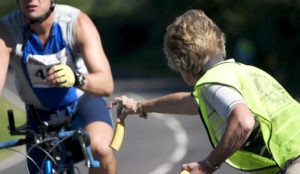When you hear the word geometry, you probably think about high school lessons on shapes and angles. When it comes to bicycle geometry, shapes and angles play a key role in determining the ride quality of a bike and its intended function. Simply defined, bicycle geometry is a bike’s components’ measurements in relation to each other. It’s important to note that these measurements change with the frame size and type. Below is an introduction to basic bike geometry and its impact on ride characteristics.
How to choose the best bike for a beginner – https://www.the-house.com/portal/how-to-buy-the-best-bike-for-a-beginner/.
Front of the Bike
Let’s start with the front of the bike, which consists of a bike’s steer components. The head tube is the part of the frame through which the fork passes, topped by the handlebar. The steeper the angle of the head tube, the faster and more responsive the steering will be.
Below the handlebar, the fork holds the wheel in place. There are two fork measurements that help determine the quality of the bike’s steering: the fork rake and the fork trail. The fork rake refers to the distance between the hub and an imaginary line passing through the hub from the headtube. If you extend those two lines all the way to the ground, the difference between them is the fork trail. The greater the fork trail, the easier the bike is to steer and handle.
The front-center measurement is the distance between the front hub and the center of the bottom bracket. This measurement is important because it contributes to the stability of the bike—the longer the front-center measurement, the more stable the bike will be.
Middle of the Bike
A standard bike frame is made up of three triangles. We’ve just learned about the front triangle’s affect on steering. The middle triangle has much to do with the position of the rider. The length and angle of the seat tube (or down tube), combined with the length of the top tube, determines how far the rider is positioned from the handlebar (adjusting the seat post can fine tune this length for the rider’s comfort).
A higher, farther seating position will force the ride to lean forward more, whereas a lower, closer seating position will allow the rider to remain more upright. A lower position will likely suit a shorter rider, and a higher position will feel more comfortable for a taller rider. These measurements are respectively known as the stack (the vertical measurement between the center of the bottom bracket shell and top of the head tube) and the reach (the horizontal measurement between the center of the bottom bracket shell and the top of the head tube). The distance between the top tube and the ground is known as the standover height.
Back of the Bike
One key measurement at the back of the bike is the seat angle. This is the angle between the center of the downtube and an imaginary line passing through both hubs. A steeper seat angle will push the seat farther from the handlebar. Another key measurement is the chainstay length, which is the distance between rear center axle and the center of the bottom bracket. Together with the front-center, this measurement helps determine the wheelbase and contributes to a bike’s overall stability. The greater the chainstay length, the more room there is for riders with large feet to pedal.
How to choose a bike – https://www.the-house.com/portal/choose-bike/.
Sources:
https://bikexchange.com/bicycle-geometry-101/
https://www.cyclingabout.com/understanding-bicycle-frame-geometry/
https://bikeaton.com/expert-tips/bike-geometry/
https://twowheelsbetter.net/bicycle-geometry/
https://holsteinsharley.com/bike/what-is-bike-standover-height-solved.html










